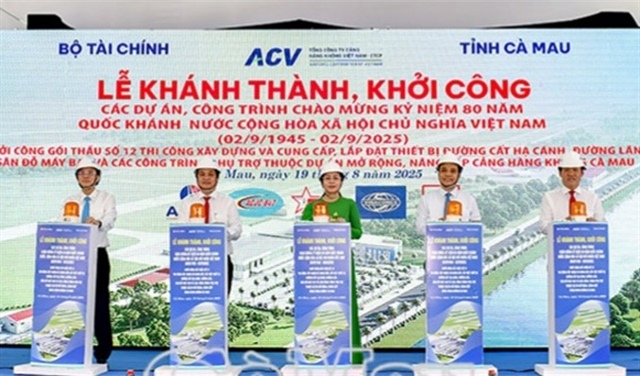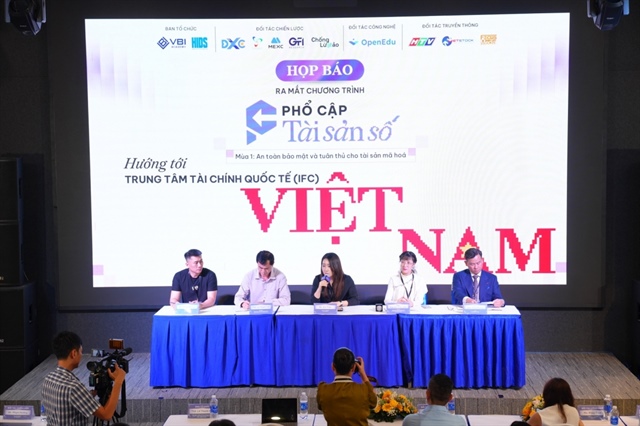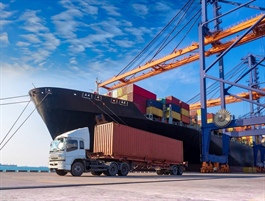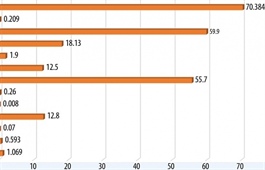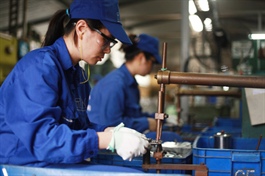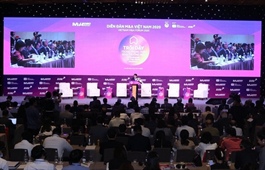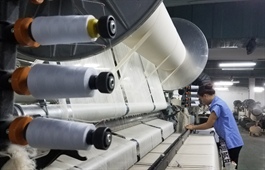South Korean firms in Viet Nam can reap FTAs benefits
South Korean firms in Viet Nam can reap FTAs benefits
South Koreans investing in Viet Nam can capitalise on preferential treatment under free trade agreements (FTAs) that Viet Nam has signed to boost exports, one top official said. 
Vu Viet Nga, Deputy Head of East Asia Division under the Department of Asia-Africa Markets from the Ministry of Industry and Trade, was speaking during a teleconference held in Ha Noi on Wednesday.
Themed “Viet Nam-Korea Investment Connection”, the event was co-organised by the Viet Nam Trade Promotion Agency, the Department of Asia-Africa Markets from the Ministry of Industry and Trade and the South Korea Trade-Investment Promotion Agency (KOTRA), with the aim to introduce and update information about investment opportunities and trends of South Korean enterprises in Viet Nam, as well as introducing investment environment in localities.
Viet Nam has signed 14 free trade agreements, which are ATIGA, RCEP, CPTPP, ASEAN-India, ASEAN-Australia-New Zealand, ASEAN-South Korea, ASEAN-China, ASEAN-Japan, ASEAN-Hong Kong, Viet Nam-Chile, Viet Nam-Japan, Viet Nam-South Korea, Viet Nam- Eurasian Economic Union and Viet Nam-EU, said Nga.
“In the 2016-20 period, most tariff lines under the FTAs have entered the period of being deeply cut or completely removed,” she told Viet Nam News.
“Foreign enterprises, including South Korean firms, can make full use of much-touted benefits of those FTAs to increase export revenue as well as expand export markets, she said.
“But to be able to enjoy preferential tariffs under FTAs, the products must meet requirements under the rules of origin.”
Goods eligible for preferential treatment under FTAs have to meet general or product-specific rules of origin, and have appropriate documentation, known as the certificate of origin (C/O).
Each FTA has its own certificate of origin form, she said.
“Viet Nam has a safe and stable investment environment, fast and sustainable economic growth as well as young and low-cost human resources. The country has done a good job in controlling COVID-19.
“To attract foreign investment, Viet Nam has continuously reformed and simplified administrative procedures and policies, offering a large number of incentives in corporate income tax and import tax,” she said.
According to statistics in 2019, the whole country has 326 industrial parks and 17 coastal economic zones concentrated in big cities such as Ha Noi, HCM City, Bac Ninh, Dong Nai, Binh Duong, Long An, Ba Ria-Vung Tau, Can Tho, Da Nang.
Nga added: “The road traffic system has been upgraded and expanded, highways are better developed to make trade between provinces and economic regions easier, as well as facilitating the transport of raw materials.
"In addition, with 49 seaports, 8 airports and 23 border gates, Viet Nam is currently an international cargo transhipment hub in the Asia-Pacific region."
Since establishing diplomatic relations in 1992, Viet Nam and South Korea have strongly developed in all fields of politics, defense, security, economy and culture, said Hoang Minh Chien, deputy director of the Ministry of Industry and Trade's Viet Nam Trade Promotion Agency (Vietrade).
“The strategic co-operation partnership is tightened closer with the signing of the Viet Nam-South Korea Free Trade Agreement (VKFTA) on May 5, 2015," Chien said.
"Under the trade deal, the two sides had given each other many incentives in goods, services and investment, creating the driving force for growth in trade and investment co-operation.”
As of October this year, the total registered capital of South Korean businesses in Viet Nam reached US$70.4 billion with 8,900 projects. This year, South Korea has been pouring into 530 projects in Viet Nam a total capital investment of $3.4 billion, said Lee Jong Seob, President of the Korea Trade-Investment Promotion Agency (KOTRA) in Southeast Asia-Oceania cum General Director of KOTRA in Ha Noi.
Even amid the COVID-19 pandemic, the number of South Korean expats working in Viet Nam has reached 10,000, which expressed the readiness of South Korean businesses when investing in Viet Nam, he said.


